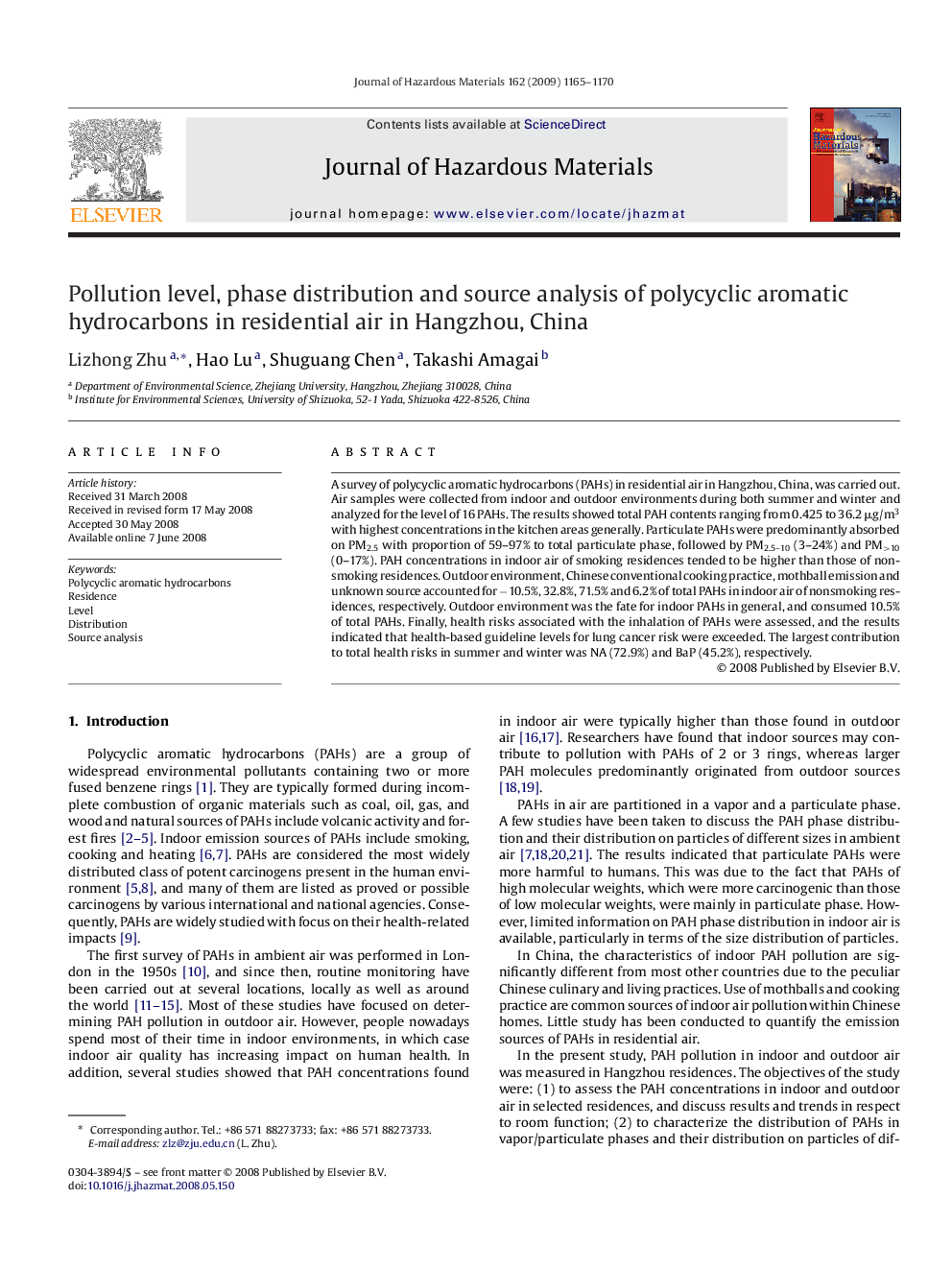| Article ID | Journal | Published Year | Pages | File Type |
|---|---|---|---|---|
| 582417 | Journal of Hazardous Materials | 2009 | 6 Pages |
Abstract
A survey of polycyclic aromatic hydrocarbons (PAHs) in residential air in Hangzhou, China, was carried out. Air samples were collected from indoor and outdoor environments during both summer and winter and analyzed for the level of 16 PAHs. The results showed total PAH contents ranging from 0.425 to 36.2 μg/m3 with highest concentrations in the kitchen areas generally. Particulate PAHs were predominantly absorbed on PM2.5 with proportion of 59-97% to total particulate phase, followed by PM2.5-10 (3-24%) and PM>10 (0-17%). PAH concentrations in indoor air of smoking residences tended to be higher than those of nonsmoking residences. Outdoor environment, Chinese conventional cooking practice, mothball emission and unknown source accounted for â10.5%, 32.8%, 71.5% and 6.2% of total PAHs in indoor air of nonsmoking residences, respectively. Outdoor environment was the fate for indoor PAHs in general, and consumed 10.5% of total PAHs. Finally, health risks associated with the inhalation of PAHs were assessed, and the results indicated that health-based guideline levels for lung cancer risk were exceeded. The largest contribution to total health risks in summer and winter was NA (72.9%) and BaP (45.2%), respectively.
Related Topics
Physical Sciences and Engineering
Chemical Engineering
Chemical Health and Safety
Authors
Lizhong Zhu, Hao Lu, Shuguang Chen, Takashi Amagai,
